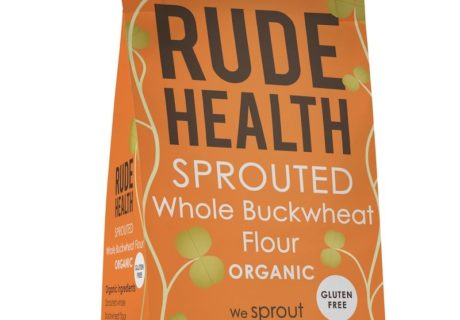In the New Year the Soil Association is to get a rebrand. The most visible change will be the organic charity’s new logo, which got its first outing at this month’s Soil Association Annual Conference.
The new logo is a striking departure from the current, serviceable but slightly buttoned up design. It’s in colour for one thing, with sweeps of blue, green and brown. The word ‘soil’ dominates – more on that in a minute – but it also incorporates a sketched version of the old logo, offering visual continuity. It’s confident, contemporary, more relaxed.
The Soil Association’s chief executive, Helen Browning, talked toNatural Products about the thinking behind the changes (see story above), which had been prompted by an internal discussion. Soil Association staffers thought the image that the organization had projected in the past had been a little over serious. The new logo, said Browning, was about “trying to express ourselves a little more, but also taking us back to our roots and why we are called the Soil Association”.
Browning revealed that many people had asked her why the organisation wouldn’t go the whole hog and change its name (the question is itself a hardy perennial). But for Browning, soil is the “very source of our wellbeing”. And to that extent, having the name Soil Association provides the perfect opportunity to explain the importance of soil to a wider audience.
Getting people interested in soil is not without its challenges. I recall the moral philosopher, Mary Midgley, addressing an earlier Soil Association conference on this very subject and listing the frequently pejorative uses of words like soil (or soiled), muck, dirt and sod. Little wonder that it’s so hard to get people interested in this life-supporting, water regulating, carbon sequestering, biodiversity-boosting miracle material when we’re psychologically programmed to associate it with a vocabulary of fear and loathing!
But telling the story of soil can be done effectively and engagingly. Deborah Koons did a brilliant job in her film Symphony of the Soil (see it if you can). The Soil Association is of course working actively in this area with schools and non-organic farmers, and has been busy forging relationships with Britain’s millions of gardeners and growers. Next year it is opening up its farm visit programme to non-members – one of the best ways of all to bring the subject to life.
It’s only right that the Soil Association should be leading the way in highlighting the need to nurture and protect soil. The underpinning importance of the soil – ‘healthy soil, healthy plants, healthy people’ as the Association’s founder Lady Eve Balfour summarised – is woven into the organization’s history and is a founding principle of the organic movement.
The chef, Raymond Blanc, once told Natural Products about his own introduction to the subject, aged seven. “My papa came in from the garden one day with a handful of earth. He told me to look at it carefully, smell it, and then … yes … taste it.” It would be, he said, the lesson of a lifetime.
 By Jim Manson
By Jim Manson
Natural Products editor and environment journalist





